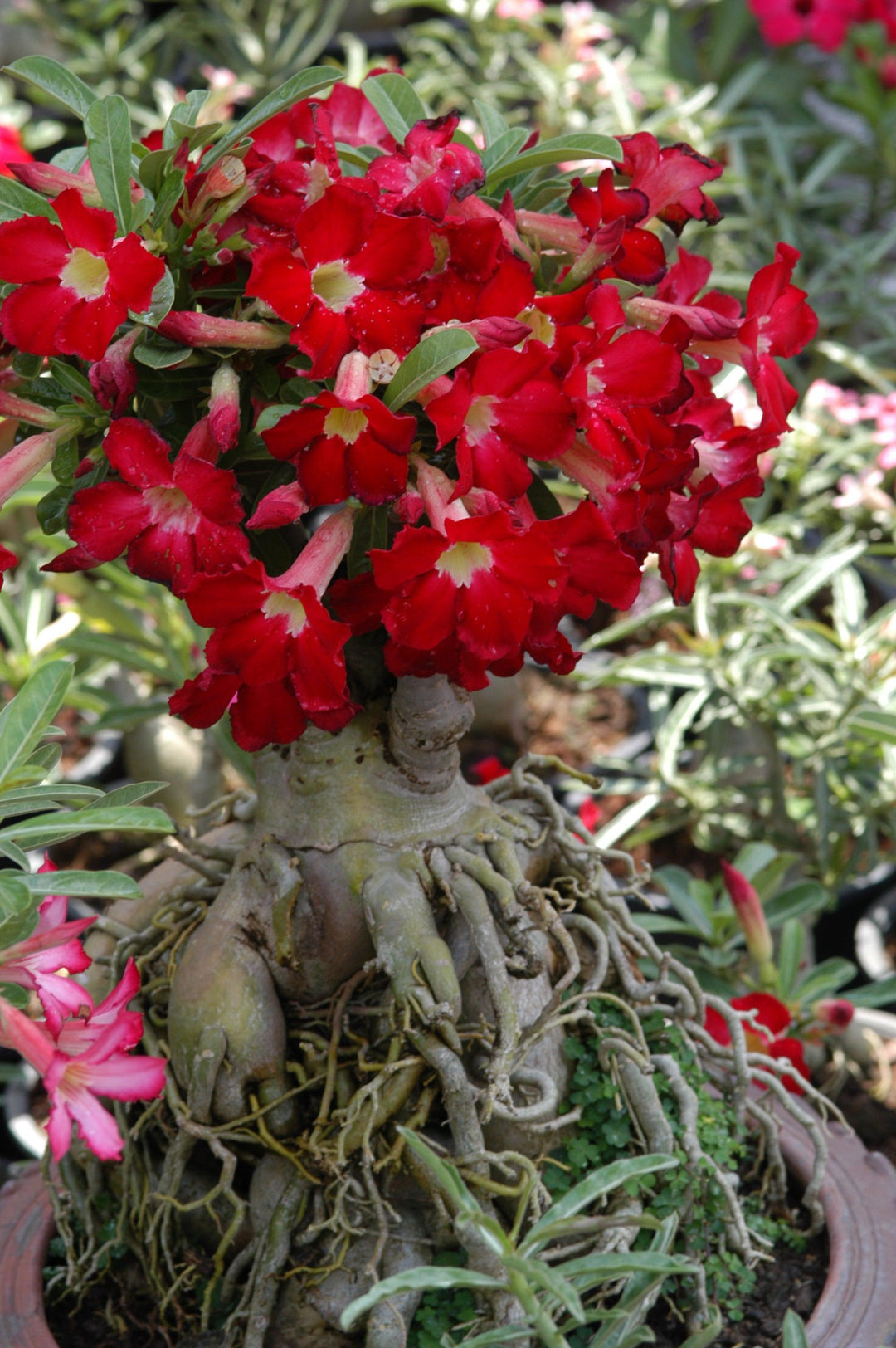
How To Care For Your Desert Rose Bonsai Tree
Adenium Obesum Bonsai Care
About The Desert Rose Bonsai Tree
The desert rose is a native African that develops large, beautiful flowers when it gets enough sunlight, and has an interesting bulbous shape.
Placement
A Desert Rose makes a wonderful indoor bonsai over the winter, but it enjoys to be outdoors when the temperature is above 40 degrees. Make sure it gets few hours of sun (morning sun, with afternoon shade is best.)
Over the winter, place your desert rose bonsai on a windowsill getting a few hours of sunlight per day (south facing is best, north is worst.)
Watering
The desert rose bonsai is… a desert plant. This means it doesn’t need to get watered as frequently as other bonsai trees. Once a week should be fine, as long as it’s not staying dry for too long.
Do not over water this bonsai!
Humidity
When you take your desert rose bonsai tree inside for the winter, using a humidity tray is recommended.
Fertilizing
Since your desert rose bonsai is in a small pot, and not the ground, it needs nutrients. A slow release (pellet based) fertilizer is perfect for this, and can be added sparingly every 1-2 months during the growing season.
Pruning & Trimming
Trim back the new growth to the farthest safe point that looks good to you — but never remove all of the new growth.
A regular trim will help keep your desert rose bonsai tree short, while helping the trunk grow thicker.
Repotting
Repotting must be performed periodically on your bonsai, desert rose included, when it’s root system has filled the pot. If you can clearly see the roots coming out of the bottom of the pot, it’s time to repot your bonsai.
Generally, this means every 2-3 years for a deciduous tree and every 4-5 years for an evergreen.
As desert rose is a slower growing desert tree, you can expect it around the 4-5 year mark.
Repotting should be done in mid-summer, when the tree is at it’s least fragile state.
The desert rose bonsai, along with all of its soil, should be removed from the pot. From there, you can trim away no more than 1/3rd of the root mass (1/4th is preferred.)
Then you can repot the tree in the same pot, or give it a newer / bigger pot to thrive in.
After repotting, your bonsai’d desert rose should be thoroughly watered.
Diseases, Insects & Other Pests
Your desert rose bonsai can be treated for pests like a normal desert rose plant. Just remember, your tree is miniature and will need a much smaller and more gentile dose of treatment.
Would you like to SEE these instructions as a series of videos, instead of just reading them?
If you want to demystify the art of bonsai so you can become a master of this relaxing hobby in just a few days, you need the right training. I’ve built a digital video course that mixes classroom style instructional videos with “over the shoulder” style training videos to make bonsai simple to understand, and easy to start.
In this digital video course, you'll discover:
- How to create a bonsai tree from scratch that will help you experience true inner-peace and calm.
- How to keep your tree collection alive and well so you can enjoy their benefits for a lifetime.
- How to shape your bonsai like a professional, allowing you to design it however you like.
- What bonsai tools you really need and how to use them so you’ll never buy a tool that you don’t need again.
- How to cultivate your own trees so you never have to buy another tree from a store again.
- How to use all of this to create your own bonsai collection so you enjoy this relaxing hobby for the rest of your life.



